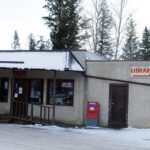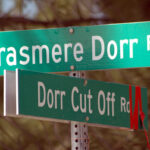Home »
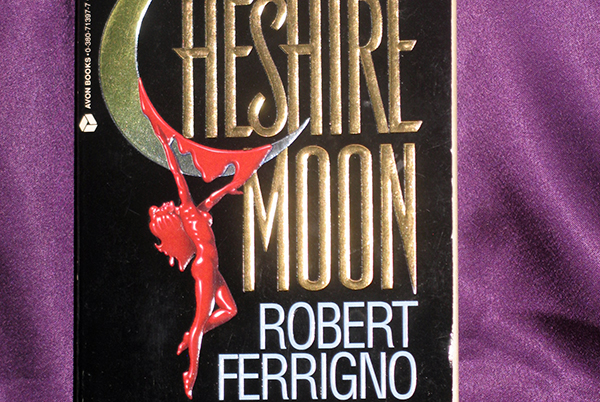
This novel is dark, but not mean
Book Review
By Derryll White
Ferrigno, Robert (1993). The Cheshire Moon
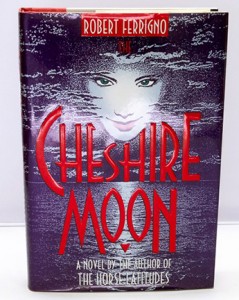 Reading a lot, and working in a bookstore, I have learned to be judicious in my recommendations to customers. I have also learned to listen closely to the suggestions of other bookstore workers. While buying some old Kaminsky and Westlake novels at the Chronicles of Crime store in Victoria, the clerk said to me, “If you are reading noir fiction you must be reading Ferrigno!” “Who?” I said. “Oh, let me show you,” and she pulled ‘The Cheshire Cat’ from a bottom shelf. “I was saving this to read again, but you really should try it!” Enough said.
Reading a lot, and working in a bookstore, I have learned to be judicious in my recommendations to customers. I have also learned to listen closely to the suggestions of other bookstore workers. While buying some old Kaminsky and Westlake novels at the Chronicles of Crime store in Victoria, the clerk said to me, “If you are reading noir fiction you must be reading Ferrigno!” “Who?” I said. “Oh, let me show you,” and she pulled ‘The Cheshire Cat’ from a bottom shelf. “I was saving this to read again, but you really should try it!” Enough said.
Victoria is a great city for reading in. Lots of customers in the overwhelming number of outdoor coffee shops clutch books. People stroll by walking their ferrets, macaws and Airedales. Bookstores abound and interesting people catch the eye constantly, many of them stopping to ask what you are reading and why. The book takes a little longer to get through, but the texture of the city flowing by does lend humanity and grace to Ferrigno’s compelling writing.
Set in the 1990s in Los Angeles, Ferrigno caught me on the first page, linking the sinking crescent moon peaking through the palm fronds with the cold smile of the Cheshire cat in ‘Alice’s Adventures In Wonderland.’ Ferrigno gets it all right – the hamburger stands and glitter of LA, the huge stagecraft and production of the urban God show. Give it up for Jesus!
The story has a dark thread through it. It is the hint of how base and corrupt man can be, the possibilities rather than the reality that keeps the reader turning pages. There is peripheral blood but it is the tension and fear in the characters that really pulls the reader in. And then, like all the best practitioners of this genre, Ferrigno balances the scales with the softness of a father-daughter relationship, the reality of growing sexual awareness between primary story characters, and the comic tensions of an urban police force.
I find it enjoyable to go back, not very far in time, to the pre-digital age of film. Ferrigno, like my own photography instructor, takes care to point out the pleasures of control one had with a film camera and rudimentary darkroom. Some of the other themes, however, are as current today as they were in the ‘90s – the controlling intensity of the TV talk-show mavens; the drama, poignancy and tears of heart-rending family strife; the greed of man. Ferrigno does not have a heavy hand, he does not preach. As a writer he simply puts things out there for the reader to consider in his or her own time. I like that!
This novel is dark, but not mean. Robert Ferrigno has earned his place on the noir fiction shelf, but he has not excluded love or the celebration of life. The Chronicles of Crime clerk was right – I really liked this book.
Excerpts from the novel
ACTORS – Stratton grinned. It was a wide-open grin, strikingly boyish in that rugged face – so perfect Quinn knew it was phony. He had interviewed actors before, and the good ones always played to the camera, even when they were alone. Stratton was so good nobody thought he was acting for most of his career. A few years ago the Academy had wised up and presented him with its Lifetime Achievement Award.
JOURNALISM – SLAP was a snide, trendy monthly known for its insider political profiles and gritty photojournalism, celebrity exposés and holographic liquor ads. One critic described it as ‘the schizoid offspring resulting from the rape of Vanity Fair by the National Enquirer, attack journalism with a manicure.’
MOOD – A wind rose, sent wisps of cloud across that grinning moon… spiderwebs on the smile.
PHOTOGRAPHY – It was the precision of photography that attracted her, the interplay of light and shadow, black and white, and every gray tone in between. With a camera she could freeze action, capture movement, and take it home with her. In the darkroom she could distill the most subtle and fleeting emotions, controlling them through definite mathematical ratios.
1990s CONSUMPTION – South Coast was one of the largest malls in southern California, a former beanfield, now the multimillion-dollar centerpiece of Orange County retail – three levels of upscale shops, spacious and clean and safe, soft music floating through the air-conditioning. No outside noise or humidity was allowed to intrude – it was a church of immaculate consumption, stocked with bright, soft luxuries. Japanese tourists might first want to see Disneyland, but they spent most of their vacation at South Coast Plaza, nibbling frozen yoghurt as they wandered its vast corridors.
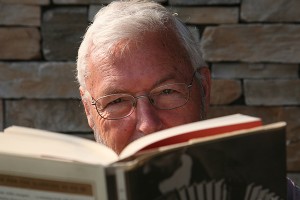 – Derryll White once wrote books but now chooses to read and write about them. When not reading he writes history for the web at www.basininstitute.org.
– Derryll White once wrote books but now chooses to read and write about them. When not reading he writes history for the web at www.basininstitute.org.



